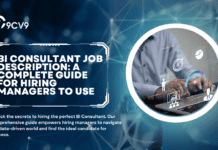Key Takeaways
- Remote and AI-powered interviews are now mainstream, reshaping how employers assess candidates across industries.
- Skills-based hiring is overtaking traditional credentials, with employers prioritizing real-world capabilities over degrees.
- Candidate experience is a key differentiator, with faster, more transparent, and inclusive processes leading to better hiring outcomes.
In today’s rapidly evolving job market, the interview process has become more complex, data-driven, and strategically important than ever before.
As we navigate through 2025, understanding the latest interview statistics, recruitment trends, and candidate behaviors is not just useful—it’s essential for both employers and job seekers aiming to stay competitive.
From the surge in AI-powered interview platforms to the increasing importance of soft skills and remote-ready talent, the landscape of hiring continues to shift in response to technological innovations, global economic shifts, and evolving workforce expectations.
Read also, our top articles on
- Ace the Interview: How to Get Hired with Confidence & Impress Hiring Managers
- Top Interview Questions to Identify the Best Candidates for Your Company

For hiring managers, talent acquisition specialists, HR professionals, and recruiters, data-backed insights into the interview process can inform smarter hiring decisions, reduce time-to-hire, and improve candidate experience.
Meanwhile, job seekers who understand how interviews are structured, what qualities employers prioritize, and how technology is influencing the process can significantly enhance their preparation and performance.
The interview, once a purely human interaction focused on resumes and in-person discussions, is now a hybrid of behavioral analysis, automation, digital platforms, and predictive assessments.
With remote and hybrid work models becoming the norm, companies are reevaluating their interviewing methods to identify candidates who not only meet job requirements but also align with organizational culture and exhibit strong adaptability.
In parallel, job applicants are more informed and selective, valuing transparency, feedback, and a streamlined application process. This dual shift has brought about a wave of innovation, leading to new tools, methods, and strategies in recruitment practices across all industries.
The year 2025 has also seen a greater emphasis on diversity, equity, and inclusion (DEI) within the hiring process. Companies are increasingly held accountable for reducing bias and ensuring fair hiring practices, which has led to the rise of structured interviews, anonymized assessments, and standardized scoring systems.
Moreover, with the rise of generative AI and machine learning, organizations are using advanced analytics to evaluate candidate potential beyond resumes and cover letters.
This blog compiles the top 75 latest interview statistics, data points, and trends in 2025 to provide a comprehensive snapshot of where the hiring industry stands today—and where it’s heading. Whether you’re building a recruitment strategy, preparing for your next big interview, optimizing your employer branding, or researching the future of work, these insights will help you make data-informed decisions and stay ahead in the ever-changing world of employment.
From the average number of interviews per hire to the latest benchmarks for candidate experience, virtual interview success rates, and AI-driven hiring solutions, each data point offers actionable value. These trends are not only shaping the recruitment and interview process today but are also setting the tone for the workforce of tomorrow.
Read on to explore the most current and impactful statistics that define the interview landscape in 2025.
Before we venture further into this article, we would like to share who we are and what we do.
About 9cv9
9cv9 is a business tech startup based in Singapore and Asia, with a strong presence all over the world.
With over nine years of startup and business experience, and being highly involved in connecting with thousands of companies and startups, the 9cv9 team has listed some important learning points in this overview of the Top 75 Latest Interview Statistics, Data & Trends in 2025
If your company needs recruitment and headhunting services to hire top-quality employees, you can use 9cv9 headhunting and recruitment services to hire top talents and candidates. Find out more here, or send over an email to [email protected].
Or just post 1 free job posting here at 9cv9 Hiring Portal in under 10 minutes.
Top 75 Latest Interview Statistics, Data & Trends in 2025
General Interview Statistics
- Research shows that 55% of job applicants will abandon their application process if the employer does not schedule their first interview within one week of applying, indicating the critical importance of timely communication in recruitment.
- Studies reveal that only approximately 2% of all candidates who submit job applications are actually selected to participate in a job interview, highlighting the highly competitive nature of the hiring process.
- On average, employers conduct interviews with about six candidates for every single job vacancy they advertise, demonstrating the typical level of candidate screening before making a hiring decision.
- The standard job interview process for most organizations consists of two distinct stages, often including an initial screening interview followed by a more in-depth final interview.
- Data from the UK indicates that the average duration of the entire interview process, from application to final decision, takes approximately 27.5 days, reflecting the time investment required in recruitment.
- The typical length of a job interview ranges between 30 and 45 minutes, providing sufficient time for both the interviewer and candidate to exchange relevant information.
- Employers usually take an average of 12 days to contact candidates with feedback following an interview, which can significantly impact candidate experience and engagement.
- It generally takes about three weeks from the final interview stage for a candidate to receive an official written job offer, underscoring the time involved in finalizing hiring decisions.
- More than half of all job candidates are rejected during the first interview stage, illustrating the rigorous screening that occurs early in the recruitment process.
- Surveys indicate that 40% of employers would reject a candidate if the individual failed to demonstrate enthusiasm during the interview, emphasizing the importance of candidate engagement.
- Approximately 78% of candidates report difficulty in finding sufficient information about companies before attending interviews, which can hinder their ability to prepare effectively.
- Only 39% of candidates who attend initial interviews progress to the final interview stage, showing the narrowing funnel of candidate selection.
Video Interview Statistics
- Recent studies show that 81% of recruiters have incorporated video interviews as a regular part of their hiring process, reflecting a significant shift towards digital recruitment methods.
- About 69% of employers have integrated video interviews into their recruitment workflows, using this technology to streamline candidate evaluation.
- Among companies currently using video interviews, 93% plan to continue utilizing this method, indicating strong confidence in its effectiveness.
- The use of one-way video interviews, where candidates record responses without real-time interaction, has increased by 67% since 2020, demonstrating growing adoption.
- More than half of employers who adopted video interviewing during the COVID-19 pandemic have continued to use this format even after restrictions were lifted.
- For remote job positions, 90% of employers no longer require any in-person interviews, relying entirely on virtual methods to assess candidates.
- Less than half of employers require candidates to attend a face-to-face interview after successfully completing a video interview stage, showing a trend towards fully virtual hiring.
- Around 10% of candidates admit to conducting video interviews secretly while at their current jobs, highlighting the discreet nature of job searching in some cases.
- One-third of candidates have reported quitting an interview process due to a poor experience with video interview technology or format, underscoring the importance of user-friendly platforms.
Hiring and Interview Trends
- Hiring volumes in the Big Tech sector have increased by approximately 40% year over year in 2025, reflecting strong demand for tech talent.
- Structured interviews, which use standardized questions and scoring, are gaining popularity for their ability to reduce unconscious bias and improve fairness in candidate evaluation.
- Skills-based hiring, which emphasizes candidates’ practical abilities and potential rather than solely relying on resumes, has become a dominant trend in recruitment strategies.
- The use of video interviewing tools has resulted in a 75% faster shortlisting process compared to traditional methods that rely on phone or in-person screening.
- Video interviews have been found to be twice as predictive of candidate success on the job compared to conventional interview techniques.
- Increasingly, employers are using AI-powered screening tools to analyze candidates’ body language, tone of voice, and facial expressions during video interviews to gain additional insights.
- Emotional intelligence assessments are now prioritized alongside technical skills during interviews, as employers recognize the importance of interpersonal abilities.
- Some companies have begun using Virtual Reality (VR) technology to simulate real job scenarios during interviews, providing a more immersive evaluation experience.
- The interview process has become more selective and cautious, with employers raising their standards and criteria for candidate evaluation in 2025.
Candidate Behavior and Preferences
- More than half of candidates, approximately 55%, will abandon their job application if they do not receive contact from the employer within one week, indicating the need for prompt communication.
- Many candidates now use generative AI tools to prepare for interviews, including scripting and practicing video responses to improve their performance.
- Asynchronous video interviews, which allow candidates to respond to questions on their own schedule, are increasingly preferred for their convenience and flexibility.
- Candidates frequently report challenges in accessing detailed company information before interviews, which negatively affects their ability to prepare adequately.
- Poor experiences with video interview platforms cause about 33% of candidates to withdraw from the interview process altogether.
Interview Process Efficiency
- The adoption of video interviews has significantly reduced both the time and cost associated with early-stage candidate screening.
- Structured interview formats improve hiring outcomes by standardizing questions and evaluation criteria, leading to more objective assessments.
- Asynchronous video interviews enable hiring managers to review large volumes of candidate responses in bulk, saving substantial time during the recruitment process.
- The “interviewer effect,” where different interviewers may assess candidates inconsistently, remains a challenge in quantitative interview methods.
- Quantitative interviews generally achieve higher response rates compared to mailed questionnaires, making them a more effective data collection method.
Quantitative Interview Methodology Data
- Quantitative interviews typically use closed-ended questions that are delivered in a consistent format to all respondents to ensure comparability of data.
- In quantitative interviews, numerical values are assigned to participant responses to facilitate statistical analysis and objective interpretation.
- Conducting quantitative interviews tends to be more time-consuming and expensive than using mailed questionnaires due to the need for interviewer involvement.
- One advantage of quantitative interviews is that interviewers can clarify questions in real-time, reducing respondent confusion and improving data quality.
Additional Relevant Statistics
- The use of video interviews has increased by 57% between 2019 and 2024, reflecting rapid adoption of this technology in recruitment.
- Prior to the COVID-19 pandemic, only 22% of employers used video interviews, but by 2021 this number had surged to 79%, driven by remote hiring needs.
- Although video interview usage decreased by 10% from 2021 to 2022, it remained 57% higher than pre-pandemic levels, indicating sustained adoption.
- Forty percent of candidates report that receiving a job offer with a lower-than-expected salary negatively impacts their overall interview experience.
- On average, candidates apply to 27 different jobs before securing an interview opportunity, highlighting the competitive job market.
- Sixty-seven percent of hiring managers state that the candidate’s experience during the interview process influences their final hiring decision.
- Sixty percent of candidates say they would decline a job offer from a company if they had a poor interview experience, emphasizing the importance of candidate engagement.
- Half of all candidates prefer interview processes that include a skills assessment or work sample to better demonstrate their abilities.
- Seventy percent of employers consider cultural fit to be a critical factor when assessing candidates during interviews.
- Forty-five percent of companies use AI tools to screen resumes prior to inviting candidates for interviews, streamlining the selection process.
- Thirty percent of companies analyze video interviews using AI to evaluate candidate responses and behaviors.
- Twenty-five percent of candidates report feeling nervous about being analyzed by AI during video interviews.
- Eighty percent of recruiters believe that structured interviews reduce bias compared to unstructured, conversational interviews.
- Fifty-five percent of hiring managers report that video interviews have contributed to improving diversity among candidates.
- Thirty-five percent of candidates have experienced technical difficulties during video interviews, which can negatively impact their performance.
- Twenty percent of candidates have withdrawn from interview processes due to technical issues encountered during video interviews.
- Sixty-five percent of companies conduct at least one virtual interview stage as part of their hiring process in 2025.
- Half of all companies plan to increase their use of video interviewing technology over the course of 2025.
- Forty percent of candidates prepare less thoroughly for video interviews than they do for in-person interviews.
- Seventy-five percent of recruiters report that assessing candidate engagement during video interviews is more challenging than during face-to-face interviews.
- Eighty-five percent of candidates expect to receive timely feedback following their interviews to maintain engagement.
- Seventy percent of candidates use online resources such as company websites and social media to prepare for interviews.
- Sixty percent of employers provide interview coaching or preparation materials to candidates to improve their readiness.
- Fifty-five percent of candidates report that interviewers often fail to clearly explain the job role during interviews, which can cause confusion.
- Forty-five percent of candidates say that interviewers asking irrelevant or off-topic questions negatively affects their interview experience.
- Half of all hiring managers believe that soft skills, such as communication and teamwork, are more important than technical skills during interviews.
- Sixty-five percent of companies use behavioral interview questions to assess how candidates have handled situations in the past.
- Forty percent of companies use situational interview questions designed to evaluate candidates’ problem-solving abilities in hypothetical scenarios.
- Thirty percent of companies incorporate group interviews as part of their hiring process to observe candidate interactions.
- Twenty-five percent of companies use AI algorithms to predict candidate success after the interview stage.
- Ninety percent of companies that use video interviews report that this technology has improved the overall efficiency of their hiring process.
Conclusion
As we conclude our deep dive into the Top 75 Latest Interview Statistics, Data & Trends in 2025, one thing is abundantly clear: the hiring process is no longer what it used to be. It has evolved into a dynamic, tech-driven, and candidate-centric experience that reflects broader shifts in the workplace, from digital transformation to changing workforce demographics and heightened expectations around diversity, equity, and inclusion.
These 2025 interview trends underscore a new era in talent acquisition—one where data, automation, and personalization intersect. Employers are leveraging AI and predictive analytics to refine candidate selection, reduce bias, and optimize hiring pipelines. At the same time, job seekers are more proactive, informed, and discerning, expecting transparent processes, quicker feedback, and meaningful engagement throughout the interview journey. This dual evolution is creating both challenges and opportunities for recruitment professionals and HR leaders worldwide.
One of the standout themes in this year’s data is the rise of remote and virtual interviewing, which has solidified its position as a mainstream hiring method. With more than half of employers now conducting interviews online and many using asynchronous video assessments, location is no longer a barrier to accessing top talent. This has expanded the talent pool for organizations while demanding new levels of digital fluency and adaptability from candidates.
Another critical takeaway is the growing emphasis on skills-first hiring. Traditional credentials such as degrees are increasingly being deprioritized in favor of demonstrated skills, practical experience, and cultural fit. This shift aligns with broader workforce trends, including the rise of micro-credentials, bootcamps, and upskilling initiatives. For job seekers, this represents a significant opportunity to stand out based on what they can do, rather than where they studied.
The data also highlights how candidate experience has become a strategic priority. Organizations with fast, fair, and communicative hiring processes are outperforming those with outdated or cumbersome approaches. Delays in communication, lack of feedback, or excessive interview rounds are now top reasons why candidates decline offers or disengage. In 2025, the war for talent isn’t won solely by offering the highest salary—it’s increasingly about delivering an efficient, respectful, and tech-enabled interview journey.
Furthermore, diversity, equity, and inclusion (DEI) initiatives are becoming embedded into the very fabric of modern interviewing practices. Structured interviews, blind resume reviews, standardized evaluations, and inclusive job descriptions are all contributing to more equitable hiring outcomes. Companies that invest in inclusive hiring not only gain access to broader talent pools but also build stronger, more innovative teams.
As we look ahead, these interview statistics are more than just numbers—they are indicators of where recruitment is headed and what organizations must prioritize to attract and retain top talent in a competitive market. Whether you’re a recruiter rethinking your talent acquisition strategy, a business leader focused on growth, or a job seeker aiming to navigate a complex hiring landscape, these insights can inform your next steps and sharpen your approach.
To succeed in 2025 and beyond, embracing innovation, prioritizing human-centric processes, and continuously learning from data are no longer optional—they are essential. Interviews are evolving into more than just assessments; they are brand touchpoints, relationship-building opportunities, and a critical part of the employee journey.
Stay informed, adapt proactively, and use these 75 data-driven insights to future-proof your hiring strategy or elevate your career trajectory. The future of interviews is here—and it’s smarter, faster, fairer, and more connected than ever before.
If you find this article useful, why not share it with your hiring manager and C-level suite friends and also leave a nice comment below?
We, at the 9cv9 Research Team, strive to bring the latest and most meaningful data, guides, and statistics to your doorstep.
To get access to top-quality guides, click over to 9cv9 Blog.
People Also Ask
What are the most important interview statistics in 2025?
The most important interview statistics in 2025 highlight the rise of remote interviews, AI-powered assessments, and the shift toward skills-based hiring.
How has the interview process changed in 2025?
The interview process in 2025 is more data-driven, tech-enabled, and focused on candidate experience, with virtual formats becoming the norm.
What percentage of interviews are conducted remotely in 2025?
Over 60% of interviews in 2025 are conducted remotely, with many companies preferring video or asynchronous platforms to streamline hiring.
How is AI being used in interviews in 2025?
AI is used in candidate screening, video interview analysis, skill assessments, and reducing hiring bias through structured evaluations.
Are soft skills more important in 2025 interviews?
Yes, soft skills such as communication, adaptability, and collaboration are highly valued by employers and often assessed during interviews.
What role does data play in the hiring process in 2025?
Data drives hiring decisions through performance metrics, predictive analytics, and structured interview scoring to ensure fair and effective outcomes.
How long does the average interview process take in 2025?
The average interview process in 2025 takes about 3 to 4 weeks, though tech-enabled companies are reducing this time through automation.
What are the top reasons candidates reject job offers in 2025?
Top reasons include poor communication during interviews, lengthy processes, lack of transparency, and misalignment with company culture.
How do companies improve candidate experience in 2025?
Companies improve experience by simplifying application steps, offering timely feedback, using clear communication, and personalizing outreach.
What is the impact of remote work on interview trends in 2025?
Remote work has normalized virtual interviews and expanded access to global talent, changing how companies assess and hire candidates.
What is skills-based hiring and why is it popular in 2025?
Skills-based hiring prioritizes demonstrated abilities over degrees, allowing companies to hire based on practical knowledge and performance.
What tools are used for virtual interviews in 2025?
Popular tools include Zoom, Microsoft Teams, HireVue, VidCruiter, and AI-driven platforms that assess communication and skill fit.
Are structured interviews more common in 2025?
Yes, structured interviews are widely adopted to reduce bias, improve consistency, and align interview scoring with job requirements.
How important is diversity in hiring in 2025?
Diversity is a top priority in 2025, with companies adopting inclusive hiring practices, blind resumes, and diverse interview panels.
Do candidates expect feedback after interviews in 2025?
Yes, candidates increasingly expect clear and timely feedback after interviews, and companies offering it see higher engagement and acceptance rates.
What metrics do recruiters track during interviews in 2025?
Recruiters track time-to-hire, candidate satisfaction, offer acceptance rate, interview-to-offer ratio, and quality of hire.
Are asynchronous video interviews effective in 2025?
Asynchronous video interviews are widely used and effective for initial screening, saving time and providing flexibility for both sides.
What industries are adopting AI in interviews the most in 2025?
Tech, finance, healthcare, and customer service sectors are leading in adopting AI tools for interviews and talent assessments.
How do employers assess cultural fit in 2025?
Employers assess cultural fit using behavioral questions, values-based assessments, and scenario-based virtual interviews.
What are the candidate expectations for interviews in 2025?
Candidates expect transparent processes, prompt communication, meaningful feedback, and opportunities to showcase real-world skills.
What is the success rate of virtual interviews in 2025?
Virtual interviews have a high success rate, with many companies reporting similar or improved hiring outcomes compared to in-person formats.
How does automation improve interview efficiency in 2025?
Automation speeds up scheduling, resume screening, communication, and assessment scoring, reducing recruiter workload and time-to-hire.
What are the latest trends in recruiter-candidate communication in 2025?
Trends include personalized outreach, automated updates, real-time messaging, and AI-driven insights to enhance candidate engagement.
Are cover letters still important in 2025 interviews?
Cover letters are becoming less critical, with many companies focusing on skills, portfolios, and recorded responses over traditional formats.
What challenges do companies face in 2025 interviews?
Challenges include talent shortages, maintaining DEI standards, adapting to tech changes, and managing candidate expectations.
How do companies reduce interview bias in 2025?
Companies reduce bias through structured interviews, diverse panels, blind hiring practices, and AI tools that monitor interviewer behavior.
What is the role of employer branding in interviews in 2025?
A strong employer brand improves application rates, candidate trust, and interview engagement, especially in competitive job markets.
How do candidates prepare for interviews in 2025?
Candidates prepare using AI coaching tools, mock video interviews, company research, and practicing answers to behavior-based questions.
What technologies are shaping interviews in 2025?
Key technologies include AI, machine learning, video analytics, chatbots, automated scheduling, and virtual reality for immersive assessments.
Why is candidate experience critical to hiring success in 2025?
A positive experience increases offer acceptance, reduces drop-offs, boosts employer reputation, and supports long-term talent retention.
Sources
- Simplilearn.com — Job Interview Statistics and Trends for 2025
- Kickresume.com — HR Statistics 2025: Resume Writing, Job Search, Recruiting & More
- Criteria Corp — The Platform for Candidate Assessments and Interview Analytics
- JobScore.com — Job Interview Statistics You Should Know in 2025
- Infeedo.ai — Data-Backed Hiring: What Top Recruiters’ Metrics Really Show in 2025
- Gem.com — 10 Takeaways from the 2025 Recruiting Benchmarks Report































![Writing A Good CV [6 Tips To Improve Your CV] 6 Tips To Improve Your CV](https://blog.9cv9.com/wp-content/uploads/2020/06/2020-06-02-2-100x70.png)


